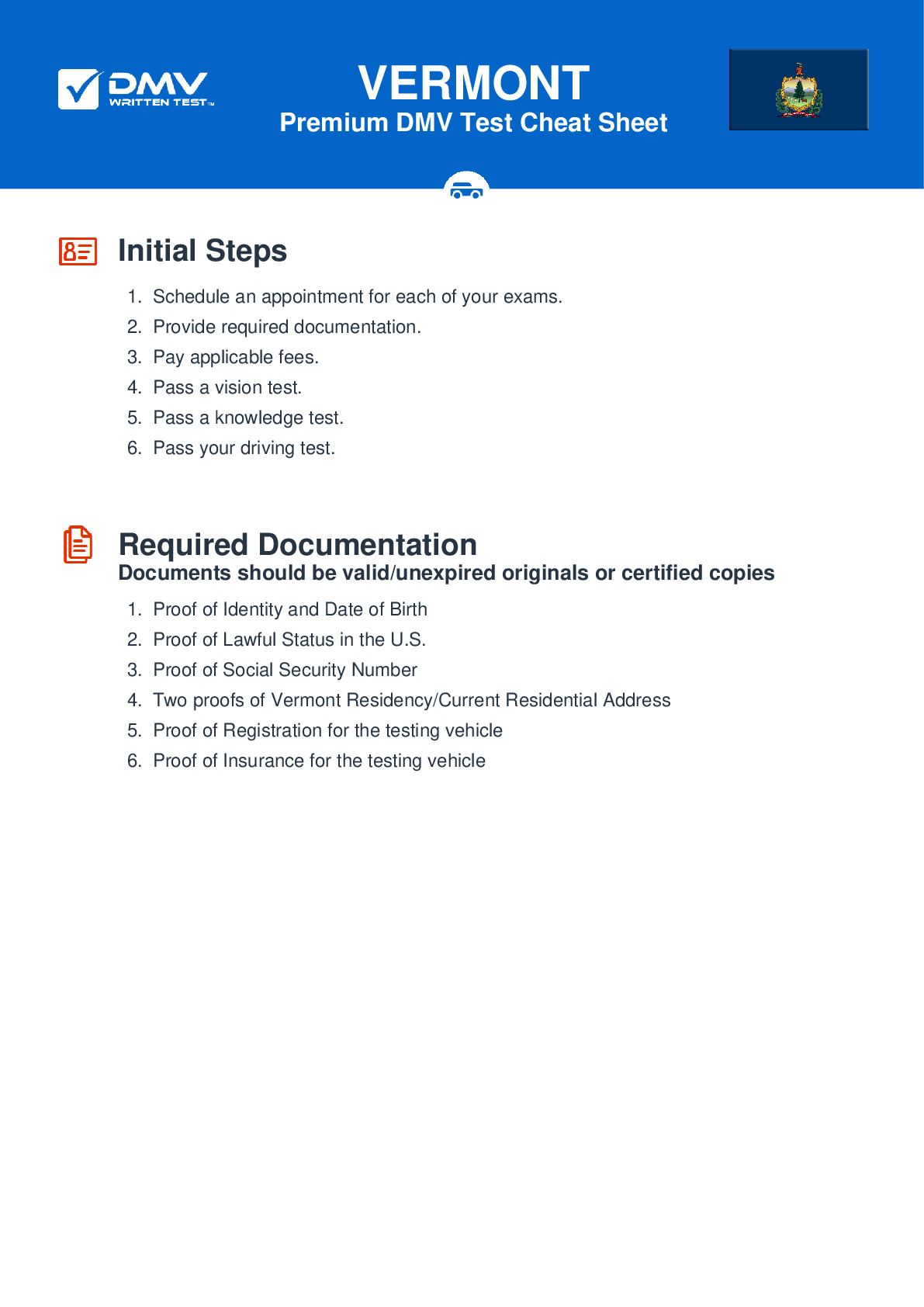2025 Vermont Permit Test 3
The following questions are from real DMV written tests. These are some of the actual permit questions you will face in Vermont. Each permit practice test question has three answer choices. Select one answer for each question and select "grade this section." You can find this button at the bottom of the drivers license quiz. For a complete list of questions and answers for Vermont please visit https://cheat-sheets.dmv-written-test.com/en/vermont/car.
Number of Tests
Number of Question
Passing Score
1. To drive safely at night, you should:
Explanation
At night, visibility is reduced. Take steps to make driving in the dark more safe for you and the other drivers on the road.
2. If you begin to feel tired while driving, the best thing to do is to:
Explanation
Being fatigued while driving is similar in danger to driving under the influence of alcohol. If you begin to feel tired while driving, the best thing to do is to stop driving.
3. Braking distance is affected by:
Explanation
Factors that can affect braking distance include how fast your vehicle is traveling, the condition of your brakes and tires, and the condition of the pavement.
4. What happens if you drink alcohol while taking prescription or over-the-counter medicine?
Explanation
Consuming alcohol and other drugs together can increase the impairing effects of both. For example, having one drink while you are also using a cold remedy could affect you as much as several drinks would when being consumed separately from any medications.
5. When turning or changing lanes, you must:
Explanation
Always signal your intentions when changing lanes, turning, or pulling away from a curb. Do not allow yourself to become lazy and form the bad habit of not following this law.
6. Before switching on the ignition, you should:
Explanation




